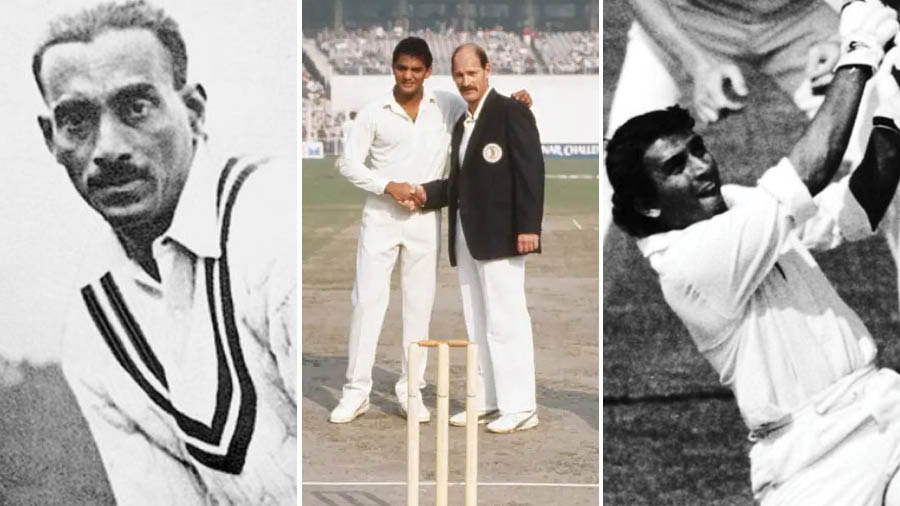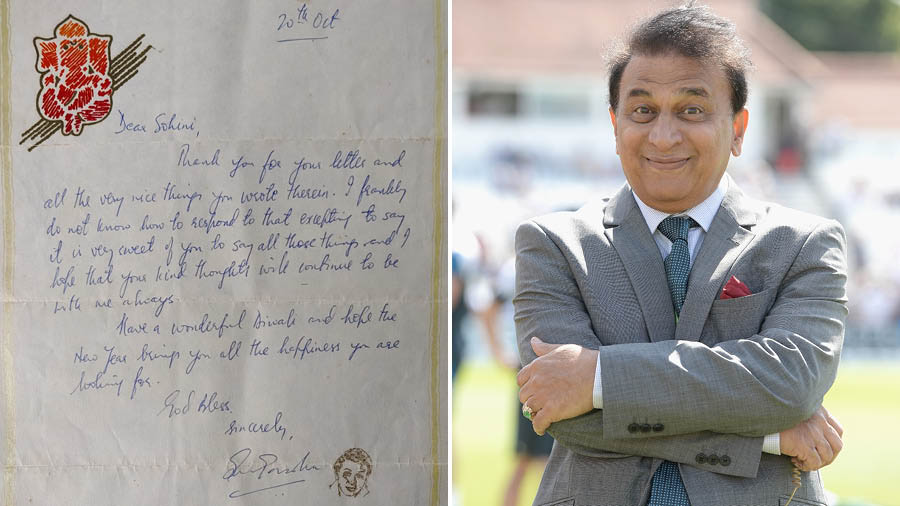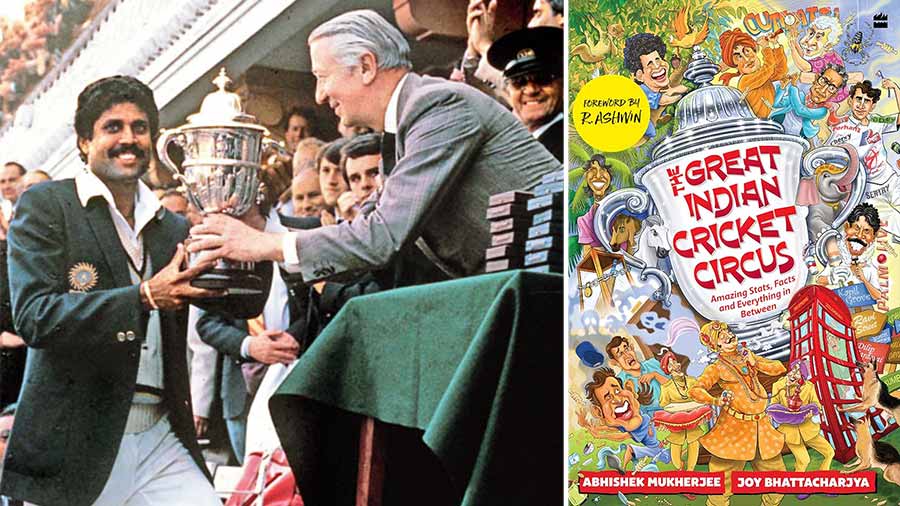Indian cricket is replete with myths, forgotten tales and mind-boggling anecdotes. The Great Indian Cricket Circus (published by HarperCollins India), co-authored by cricket geeks Joy Bhattacharjya and Abhishek Mukherjee, is a timely collection of hundreds of fascinating stories about India’s favourite sport. My Kolkata picks out five such stories that make the book a treasure trove for all cricket fans.
The BCCI’s journey from $120,000 to $6.2 billion started with South Africa

Mohammad Azharuddin and Clive Rice ahead of India’s match against South Africa at the Eden Gardens in November 1991 Getty Images
South Africa’s apartheid policies had earned them a ban from international cricket for almost two decades. However, throughout the 1980s, Ali Bacher — the last man to lead South Africa before the ban — tirelessly tried to arrange ‘rebel’ tours, inviting teams to South Africa by luring them with enough money to forego their international careers.
South Africa’s first international series after the ban was in India, in 1991/92. Bacher, the manager of his team, asked the BCCI about the formalities regarding broadcasting rights of the series in South Africa. This seemingly normal request left the BCCI authorities confused, for never in their history had anyone offered them money to telecast live cricket. BCCI’s revenue from cricket matches in India came only from a share of stadium tickets and advertisements inside the stadium. If anything, at times they had to pay Doordarshan to cover live cricket (and not the other way round).
After a frantic discussion, the BCCI got back to Bacher with an offer of $10,000 per match for three ODIs. Bacher offered $40,000 per match (in other words, four times what the BCCI wanted for the entire series). South Africa’s return to international cricket mattered to people back home, whose future leader Nelson Mandela would later say, “Sport has the highest power to change the world.”
This sum of $120,000 for a high-profile series was the BCCI’s first income from selling television rights. For perspective, the BCCI sold the IPL rights for five years to Disney Star and Viacom for $6.2 billion in 2022.
Denis Compton and his unpaid reward
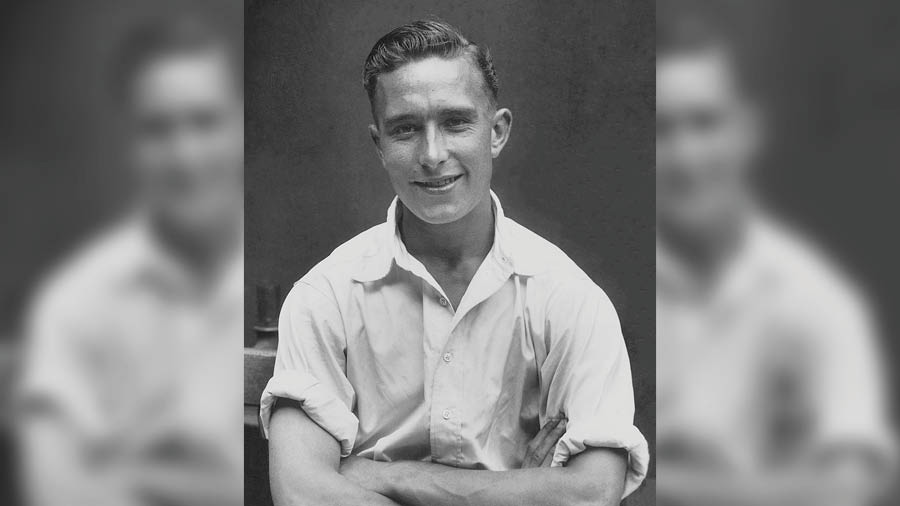
Denis Compton scored an unbeaten 249 for Holkar against Bombay in the 1944/45 Ranji Trophy final Wikimedia Commons
Denis Compton was posted in MHOW (in Indore) during the Second World War. Holkar captain C.K. Nayudu got news and immediately poached Compton to play for them. Holkar reached the final of the 1944/45 Ranji Trophy at Brabourne Stadium. Here, after securing a 102-run first-innings lead, Bombay piled up 764, leaving Holkar to chase a mammoth 867.
They (Holkar) were 177 for two at stumps on the fifth day of the timeless match, with Mushtaq Ali on 106 and Compton on 55. Now, Hiralal Seth, a local businessman, approached Compton: “Mister Compton, this is a very important match for the whole locality. It is very necessary that we win, so for every single run you make after passing your century I will give you a hundred rupees.”
Compton was eventually left stranded on 249 as Holkar were bowled out for 492. On his way back, he calculated his potential earnings of around GBP 1,300 — a substantial amount in the era. However, all he received was a note: “Sorry, have been called to Calcutta on very urgent business.”
Compton never got the money, though Mushtaq claimed that he was paid for the nine runs he had scored after reaching his 100.
When Gavaskar braved a toothache to ‘go to sleep at the wicket’
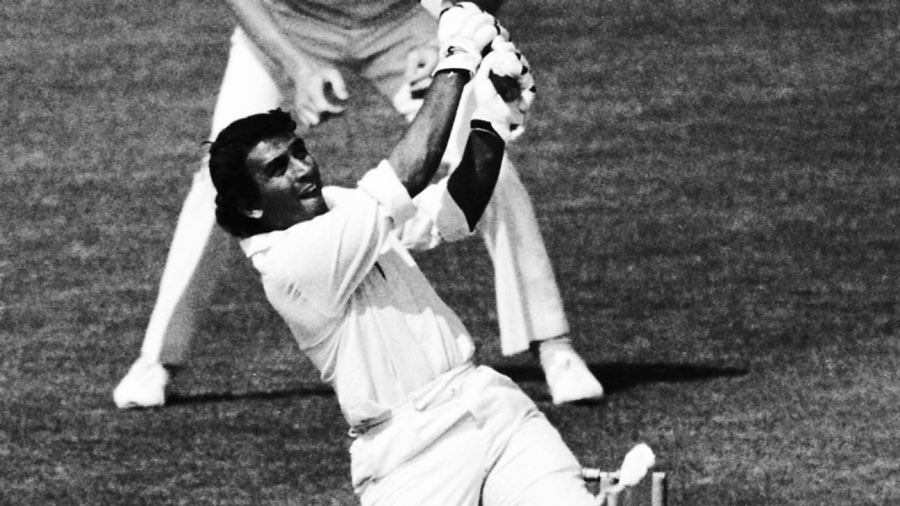
Sunil Gavaskar endured excruciating pain in his mouth during the famous Port of Spain Test against the West Indies in 1971 Getty Images
India were leading 1-0 on their 1971 tour of the West Indies ahead of the final Test, a six-day match at Port of Spain. After a net session, a thirsty Sunil Gavaskar — who had debuted in that series — requested Ashok Mankad to pour cold water from a pitcher into his mouth. As Mankad obliged, a tiny piece of ice got stuck inside a tooth cavity that had been causing Gavaskar trouble for some time.
Problems began when the ice melted. The pain became excruciating. After a sleepless night, Gavaskar battled a severe toothache for a further six-and-a-half hours to score 124, but his struggle was far from over. West Indies racked up a lead of 166, and Gavaskar, deprived of sleep and solid food, again came to bat on the fourth afternoon. He finished the day on 57.
Manager Keki Tarapore had refused to take Gavaskar to the dentist or [let him] avail painkillers or injections (“they’ll only make you drowsy”). When Gavaskar got to his second hundred on the fifth day, non-striker Dilip Sardesai congratulated him with: “I know you’re not sleeping well, so go to sleep at the wicket and don’t get out.”
Gavaskar took Sardesai seriously. He batted all of the fifth day to finish on 180, and eventually fell for 220 on the sixth morning, having batted for almost nine hours (over 15 hours in the match). It was only then that he went to the dentist. To add a postscript, he did not follow Gundappa Viswanath’s advice of keeping the tooth as a souvenir.
When an Indore lawyer wanted to arrest Tendulkar and Ranatunga

Arjuna Ranatunga and Sachin Tendulkar were the respective captains for the match at Indore that was derailed by an unprepared pitch Wikimedia Commons
On Christmas day in 1997, India hosted Sri Lanka in Indore. The Indian team management had a look at the parched pitch and insisted the ground staff roll out a second strip. Sri Lankan captain Arjuna Ranatunga objected, and match referee Ahmed Ebrahim ordered that the match be played on the original pitch.
The first ball, from Javagal Srinath, landed and exploded. Nayan Mongia gathered the ball above his eyes and another near his ankles. The ball moved at absurd angles on a clearly underprepared pitch. Eventually, Srinath hit Roshan Mahanama on the glove. The umpires had a word with the captains and called off the match — the pitch was too dangerous.
However, the teams agreed to a 25-over exhibition match on the adjacent pitch for the crowd. Only spinners and slow medium pacers were allowed to bowl. Sri Lanka won by two runs. After the match, Ravi Shastri, one of the commentators, prodded the [original] pitch softly with his shoe and managed to dig a small hole.
A few days later, a local lawyer demanded that Sachin Tendulkar, Ranatunga and Ebrahim be arrested for depriving the spectators of their right to watch the match they had paid for.
An encore took place in Delhi in 2009/10. Once again Sri Lanka batted first, though this time the match lasted 22.3 overs before the pitch was found to have “extremely variable bounce” and be “too dangerous for further play”. Feroz Shah Kotla got a one-year ban from hosting international matches.
The ‘original IPL’ that started in 1898!
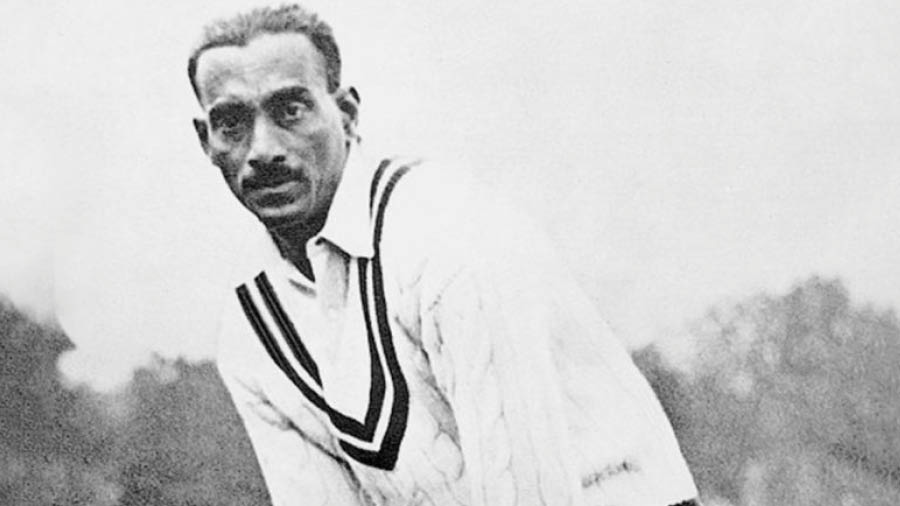
C.K. Nayudu was one of the Indian stars in the first franchise cricket setup in Indian history Wikimedia Commons
The IPL (and its predecessor, the ICL) changed Indian cricket in more ways than one. For years, cricket in India was played as per the club-state-zone-country hierarchy, with state associations playing key roles. But now, privately owned teams could scout and pick any cricketer, thereby challenging the age-old geopolitical definition of teams.
However, there is nothing new in this. In fact, privately owned teams existed in India as far back as in 1898. Rajinder Singh, the Maharaja of Patiala, led his personal team against the Calcutta Rangers. Apart from the Maharaja himself and six other Indians, the team featured J.T. Hearne, Bill Brockwell, Ranjitsinhji, all of whom were active English Test cricketers, and an ‘uncapped’ British, H. Priestly.
Bhupinder Singh, Rajinder Singh’s son, continued the tradition of having a personal team. Vizzy joined the fray in 1930. His team comprised Jack Hobbs and Herbert Sutcliffe of England; Ed Kelaart, who would later become the first man to lead a representative Ceylon side; and Indian stars like C.K. Nayudu and D.B. Deodhar.
The cricketers received royal treatment, including generous gifts and invitations to hunting trips and parties; some were even on the payroll in non-cricketing roles. The Moin-ud-Dowlah Gold Cup, which got underway from 1930/31, featured several privately owned teams.
